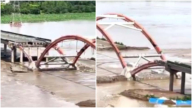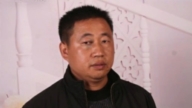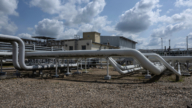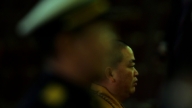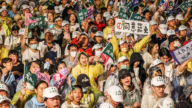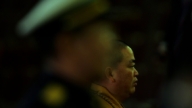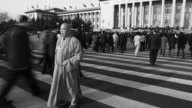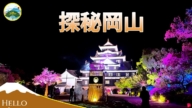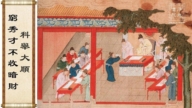【新唐人2012年4月6日讯】中国内蒙古的蒙古族村民,因不满当地国营兴隆沼林场非法侵占土地,前往当地政府抗议,遭到警方镇压,有22人被捕。3号,又有40多名村民到奈曼旗政府抗议,要求放人,当局接见了五名代表,但提出条件,要求不再提土地的问题才放人,牧民没有接受,并表示会抗争到被捕的牧民获释为止。
内蒙通辽市奈曼旗明仁苏木下属村庄“图力格嘎查”的数百名居民,4月2号抗议当地政府非法占地,奈曼旗公安部门则出动大约80名警察和30辆警车,强力打压居民的抗议行动。有消息传出,共有22名村民被捕,5人受到重伤,示威活动持续到3号。
据“南蒙古人权信息中心”消息,4月2日下午,数以百计“图力格嘎查村”的居民抗议当地政府“非法占地”,并且试图阻止挖土机进入。当地居民代表说,“当局多年来占用6万亩的土地,在过去数个月中,曾经多次组队向通辽市政府、内蒙自治区政府、甚至派代表到北京向中央政府陈情。但问题未被重视,公安部门还派人将赴京上访的居民带回,而旗政府领导接见他们时,竟然威胁要将上访代表逮捕或是拘禁。”
抗议村民打出“停止非法拘禁”、“释放被捕牧民”以及“归还土地”等标语。
随后,奈曼旗公安局派来80多名警察和30多部警车,村民遭到暴力镇压,22人被抓,5人严重受伤。
被捕的22名牧民,目前有三位健康状况恶化必须送医治疗。据牧民说,警察将不明物体喷入他们的嘴里后,被拘留的村民都出现呕吐、头晕症状。
3号晚上,抗议的蒙古族村民给“南蒙古人权信息中心”发手机短信说,“在政府释放所有被拘留的人,补偿农民的损失,惩罚殴打抗议者凶手,归还我们土地之前,不会停止抗议活动。”
过去蒙古土地政策采用民族所有制,后来共产党将它改为国有制,只给使用权,等于是对蒙古土地的一种剥夺。但共产党却随意占用土地,像设置军马场、打靶场、油田等。而大规模的土地征用和能源开发,导致牧民赖以生存的传统草场环境出现恶化。
德国“内蒙古人权同盟”主席席海明表示,内蒙的镇压一直存在,共产党近几年疯狂的掠夺内蒙资源,蒙古人却得不到任何好处,为了生存才会用游行或抗议的形式来跟共产党发出声音。
席海明:“在面上广东离香港近,国际社会关注比较强,所以在乌坎事件上做了让步,但是共产党的统治已经到了危急阶段,所以它不能够让步,所以它就最后要在内蒙啊、西藏这些地区,边疆地区下手又再狠一些的,他们既要镇压当地人民的反抗,又要杀鸡给猴看,震吓、威胁别的地方的不满。”
席海明表示,内蒙事件并不是孤立的事件,他一直存在的问题就是土地所有权被剥夺,土地被掠夺了。
席海明:“因为蒙古草原原来是民族所有制这个土地权,后来共产党来了以后搞土改啊,最后通过法律这个土地国有化,最后牧民对土地有使用权,但是连最起码的使用权都没有保障了。”
2011年5月,内蒙古锡林郭勒盟牧民莫日根因领导土地维权、保护生态环境而遭煤矿卡车轧死,这起事件曾引发当地数千民众的抗议。席海明指出,内蒙古土地维权的困境,与中国边疆统治政策对少数民族的压制有关。
“南蒙古人权信息中心”主任恩赫巴图,也在媒体上呼吁国际社会关注蒙古人现在的人权状况。
采访/陈汉 编辑/李庭 后制/孙宁
========================
Inner Mongolia Protests “Won’t Stop”
Recently, villagers in Inner Mongolia went
to the local government to protest again.
They were dissatisfied with the local state-owned
Xinglongzhao illegal occupation of land.
However, the police suppressed them,
and 22 people were arrested.
On April 3, over 40 villagers went to Naimanqi government
to protest and ask for the release of arrested villagers.
Authorities met with five representatives, but asked them
not to talk about the land issue before anyone is released.
Villagers did not accept the condition, and indicated
they would fight until the arrested herders are freed.
On April 2, hundreds of residents of Tuligacha Village,
Tongliao City, Inner Mongolia, went to protest
against their local government’s illegal land occupation.
Naimanqi Public Security Department sent 30 police cars
and about 80 policemen to suppress the protests.
It is said that 22 villagers were arrested, and 5 seriously
injured. The demonstrations continued to April 3.
The Southern Mongolia Human Rights Information Center
announced of another protest on the afternoon of April 2.
Hundreds of residents in Tuligacha Village protested
against local government’s illegal land occupying, trying to prevent the entry of an excavator.
Representatives of local residents said that the authorities
had occupied 10k acres of land for many years.
In the past few months, they have repeatedly sent teams to
the governments in Tongliao, Inner Mongolia, and Beijing.
But the problem is not paid attention to. Public security
departments sent policemen to take the petitioners back.
When government leaders met with them, they threatened
to even arrest or detain them, said the representatives.
The villagers held up banners, “Stop illegal detention,"
“Release arrested herdsman," and “Return the land."
Later on, Naimanqi Public Security Bureau sent out
about 80 police officers and 30 police cars.
The villagers were violently suppressed.
Twenty two were arrested, and five were seriously injured.
Three of the 22 arrested villagers had deteriorating health
and had to go to hospital.
According to the herders, police injected unknown
substance into their mouths, and the detainees started to vomit and got dizzy.
On the evening of April 3, villagers sent text messages to
the Southern Mongolia Human Rights Information Center.
They said, they “won’t stop protesting until the government
releases all detainees, compensates their losses,
punishes people who harmed petitioners, and returns their land.”
In the past, the policy on the Inner Mongolian land
categorized it as a national ownership.
However, the Chinese Communist Party (CCP) changed this
to state ownership and gave them the right to use it only.
This is a form of land deprivation. CCP freely occupies land,
setting horse farms, shooting galleries, oil fields, etc.
Large-scale land acquisition and energy development
led to harming the traditional grasslands which herdsmen live of.
Xi Haiming, Chairman of Inner Mongolia Human Rights
Allies in Germany commented on the issue.
Xi said, repression of Inner Mongolia had always existed,
the CCP had crazily ravened resources of Inner Mongolia.
Especially in recent years. But Mongols didn’t get anything.
They just march or protest to the CCP in order to survive.
Xi Haiming: “Guangdong is near Hong Kong, which enjoys
the international community’attention, so CCP yielded
somewhat there in regards to the Wukan events.
Now the rule of the CCP has reached a critical stage,
so it can not compromise.
Thus, it will be stricter in Inner Mongolia, Tibet
and other border areas.
They suppress local people’s resistance, and also give
a warning to others, to threaten and frighten people."
Xi Haiming thinks Inner Mongolia’ incident is not an isolated
case. Land ownership deprivation is widely spread.
Xi Haiming: “The Mongolian grassland was originally
national ownership, but the CCP conducted a land reform.
They made the land state-owned by law,
and just gave pastoralists the right to use it.
However, now even the basic right to use it
is not guaranteed anymore."
In May 2011, Mo Regen from Xilinguole, Inner Mongolia,
led herders to protect against their land’ abuse.
Mo was run over by a coal mine truck and this incident
triggered protests by thousands of local people.
Xi Haiming pointed out that the Inner Mongolia land issue,
is rather related to Chinese authorities’ policy of suppressing ethnic minorities.
Southern Mongolian Human Rights Information Center’s
Director, Enhe Batu,
also urged the international community to pay attention to
the human rights violations in Inner Mongolian.



